Did you just buy a new Craftsman pressure washer, and now you want to know how to use it? You’ve come to the right place, for we have researched this question, and we have the answer for you.
Here is a summary of the steps to use your Craftsman pressure washer.
- Check the inlet filter.
- Connect the water source to the inlet pipe.
- Prime the pressure washer to remove air from the system.
- If you need soap, fill the soap tank with soap.
- Squeeze the trigger to bleed water pressure.
- Start the engine.
Let’s talk more about your Craftsman pressure washer in the succeeding sections.
Read on!
Pressure Washers
![Caucasian Men Washing His Concrete Floor Patio Using High Pressured Water Cleaner, How To Use A Craftsman Pressure Washer [Step By Step Instructions]?](https://gardentabs.com/wp-content/uploads/2023/01/How-To-Use-A-Craftsman-Pressure-Washer-Step-By-Step-Instructions.png)
It might be a surprise for some to know that the pressure washer has been around since the 1920s.
The pressure washer’s pump has been constantly improved and refined since its introduction. The first major pump development in the 60s introduced the uniflow piston pump.
More importantly, the new Cat Pump was a low-cost design that lasts up to 10 times longer than previous pump designs. Moreover, it can produce water pressures up to 1,000 PSI—something previous pump designs never achieved.
Cat Pumps further developed the pump and eventually came up with the sleeved piston pump in the 70s that can produce water pressures of up to 3,000 PSI.
Modern pressure washers can produce water pressures up to 4,000 PSI.
Types Of Pressure Washers
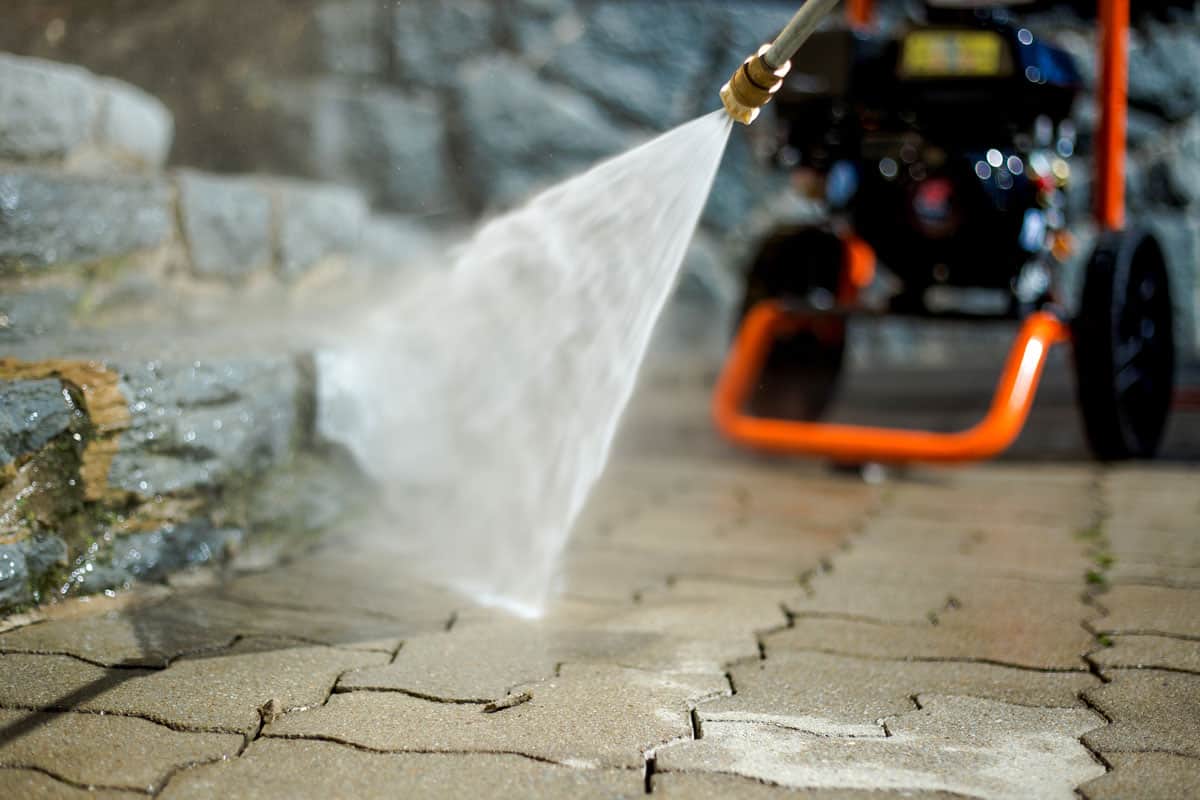
There are different types of pressure washers. Here are the different types of pressure washers that you can choose from.
Residential Pressure Washers
Residential pressure washers are for best for infrequent light-duty cleaning jobs. Patios, decks, sidewalks, and gutters are the usual clients for annual or semi-annual cleaning using residential pressure washers. Washing vehicles are usually the only frequent use of residential pressure washers, and even then, the pressure you need is still not that high.
Commercial Pressure Washers
Commercial pressure washers have larger pumps that can produce high water pressures that can exceed 4,000 PSI. They are useful for large-scale cleaning in commercial and industrial settings. Using a residential pressure washer will take too much time to complete the cleaning.
Gas Pressure Washer
Gas pressure washers use a motor that runs on diesel or petrol. These motors often produce powerful water pressures. However, just like the engine in your car, a gas-powered pressure washer can be loud.
Interchangeable Nozzles
This type of pressure washer comes with nozzles of different colors. These nozzles help produce the correct water spread and regulate the pressure from your pressure washer.
Switching nozzles allow you to tailor your pressure washer for the specific task that you want it to do.
Adjustable Spray Nozzle
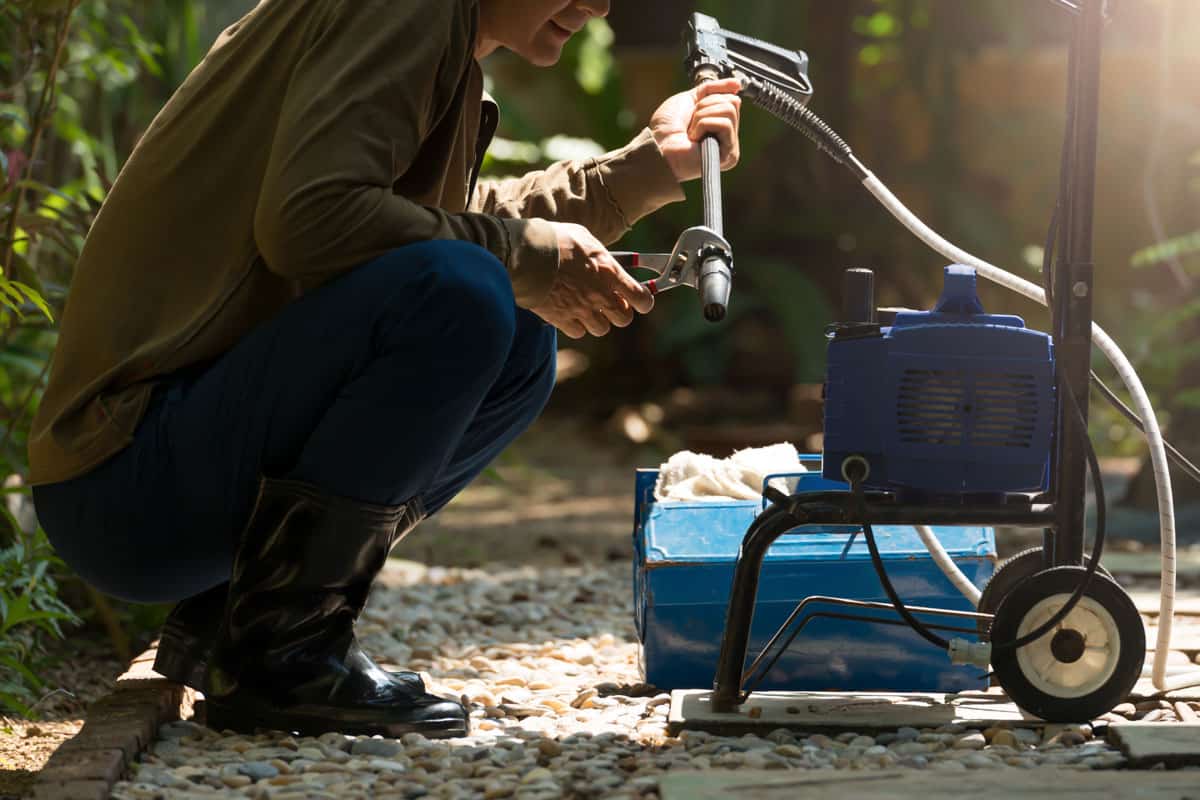
Instead of having different nozzles that you can swap out depending on the job that you need to do, this type of pressure washer can simply adjust the nozzle to match what you need.
In most cases, adjustable nozzles are more convenient than interchangeable nozzles because you don’t need to stop what you’re doing to swap out the nozzle. You can adjust the nozzle on the go without stopping what you’re doing.
Pressure Selection
Instead of relying on the nozzle to adjust the pressure output of your pressure washer, this type has a system for adjusting the output pressure of the washer. You can set it to low-pressure output or to high-pressure output, then match it with the nozzle that you need.
This system allows you to adjust your pressure washer to be useful in a lot more different jobs than standard pressure washers.
Single Detergent Tanks
Some pressure washes do not have detergent tanks, while others do. The detergent tanks allow you to clean surfaces with the help of a detergent.
The detergent tank is a reservoir that gives your pressure washer access to a detergent and mixes it with the water to have better cleaning power.
Electric Pressure Washer
This type of pressure washer uses an electric motor to produce the water pressure that you need. The greatest advantage of this type is it is more compact, and lightweight. The motor is much quieter than a gas-powered pressure washer.
Pressure Washer Nozzles
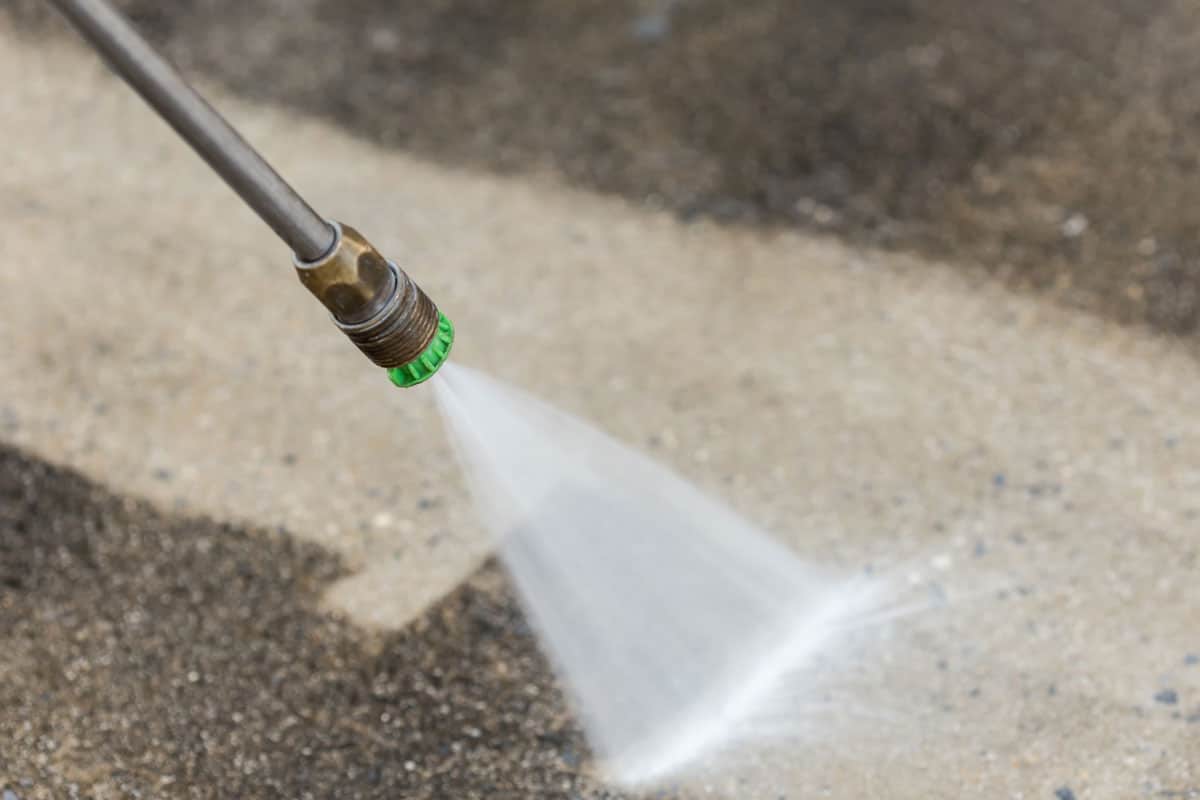
Learning about nozzles is learning half of how your Craftsman pressure washer works.
The nozzle of your pressure washer is one of its most important components. You need to become familiar with the different pressure washer nozzles to match the nozzle for the task that you want to do. Using the wrong nozzle can cause physical injury and property damage.
Keep in mind that each nozzle has a specific purpose, and that purpose is specific to that nozzle. Thus, you should not swap that nozzle for another nozzle and hope it will work the same way.
The basic nozzles have different colors. Each color corresponds to the angle of spread.
The Red Nozzle
The red nozzle has a zero-degree water angle. This gives it the highest water pressure of all the different nozzles. It can produce enough water pressure to damage paint, wood, and other soft surfaces.
The red nozzle is ideal for cutting through tough dirt on metal surfaces only. Even though it has high water pressure, water disperses quickly after a short distance.
Always test the red nozzle on a small part of the surface before using it. Check if it can damage the surface or the paint.
The Yellow Nozzle
The yellow nozzle has a 15-degree angle of spread. It is rightfully nicknamed the “Chiseling Nozzle” because of the small angle of spread.
Because of the small angle, it retains much of the water pressure of your pressure washer. It is useful for removing paint and dirt like a chisel on metal surfaces.
Use this nozzle at a 45-degree angle from a small surface area. This will minimize the water pressure. Check its effect on the surface, whether it has damaged the surface or not.
Adjust the angle accordingly to increase pressure.
The Green Nozzle
This is the first nozzle that is suitable for normal cleaning tasks around the house.
The green nozzle has a 25-degree angle of spread. It is suitable for cleaning metal and concrete surfaces.
Always use it at a 45-degree angle from concrete surfaces and at a distance of at least two feet to minimize any possible damage.
Check its effect on a small area of concrete to see if it will cause any damage.
The White Nozzle
This is commonly known as the Wash Nozzle.
The white nozzle has a 40-degree angle of spread. It is the best nozzle for regular cleaning.
Even though the water pressure is much lower with this nozzle, always use caution when using this nozzle. Test it on a small surface first and check if it will cause any visible damage.
The Soap Nozzle
The soap nozzle is normally black, although it can also be blue sometimes. It has an angle of spread of 65 degrees.
It applies minimal pressure and is generally safe for most surfaces. This nozzle is commonly used for dispersing soap.
The Turbo Nozzle
This nozzle is one of the specialty nozzles that don’t normally come as a standard nozzle with your Craftsman pressure washer.
It uses the pressure of the zero-degree nozzle and spreads it in a circular motion with a 25-degree spread. This allows it to cover a conical area.
Since this nozzle packs the same pressure as the red nozzle, apply the same caution to this nozzle as you would the red nozzle.
Turbo Nozzle is available on Amazon through this link.
Flow Control Valve
The flow control valve is not really a nozzle. Instead, it is a pre-nozzle that you install before you attach the nozzle to your pressure washer.
This is an add-on that allows you to control the water flow on your pressure washer.
Tool Daily’s High-Pressure Washer Ball Valve is available on Amazon through this link.
Rollover Nozzle
The rollover nozzle allows you to attach two nozzles to your pressure washer. You can attach a soap nozzle to apply soap to your car, then have the white nozzle on the ready for rinsing.
Twist the rollover nozzle to switch from one nozzle to another. This allows you to complete your cleaning tasks faster and more conveniently without physically swapping out nozzles.
Sellerocity Rollover Nozzle is available on Amazon through this link.
Second Story Nozzles
These two nozzles are similar to the red nozzle. However, instead of dispersing the water after a short distance, they extend the range of the water to reach the second floor of a typical US home.
These nozzles always come in a set of two.
The second nozzle is made to spray soap on the second floor.
Tool Daily Second Story Nozzle is available on Amazon through this link.
How to use a Craftsman pressure washer?
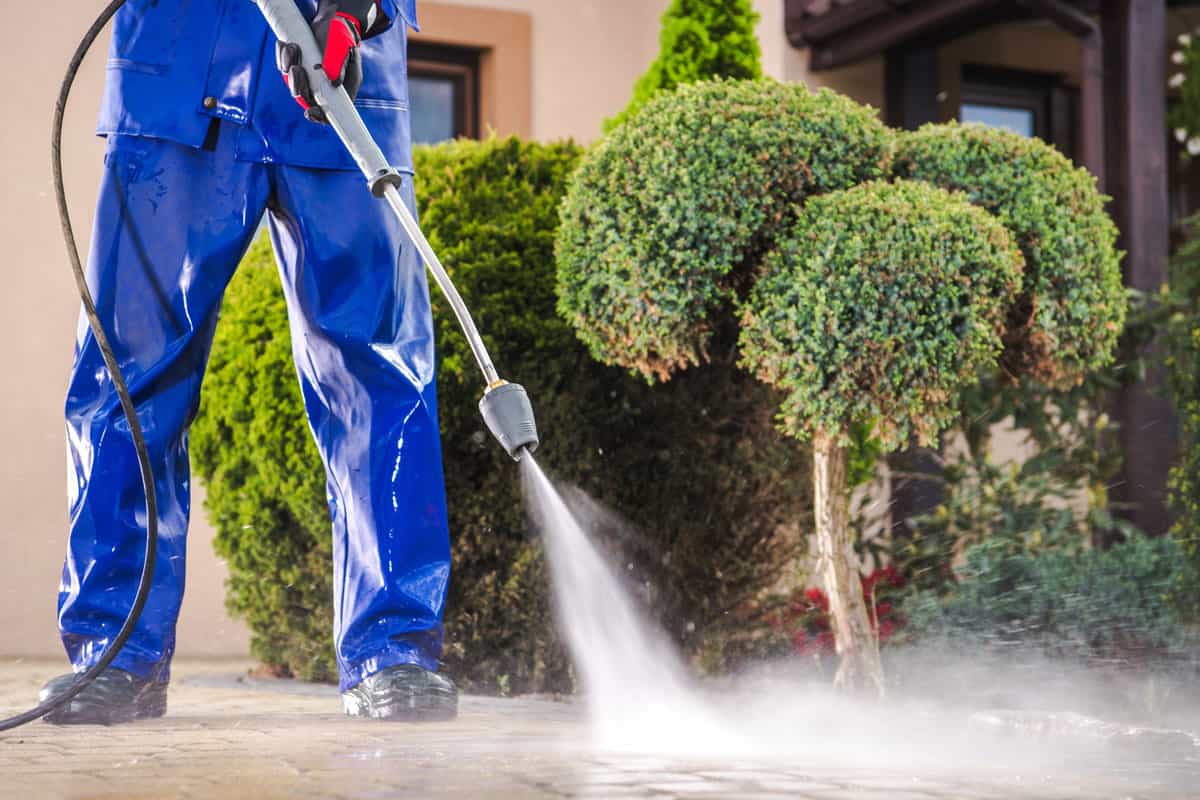
- Check the inlet filter for debris. Remove any debris before proceeding.
- Connect the water source to the inlet tube.
- Prime the pressure washer by pressing the trigger to release any air inside the system.
- Pick the nozzle that you need to use and attach it to the wand.
- Connect the wand and hose to the outlet tube.
-
- Press the trigger to release any extra pressure.
- Plug in your Craftsman pressure washer if you have the electric type.
-
- Turn on the safety switch if you have the gas type.
- Start the engine.
- Press the trigger to use.
Conclusion
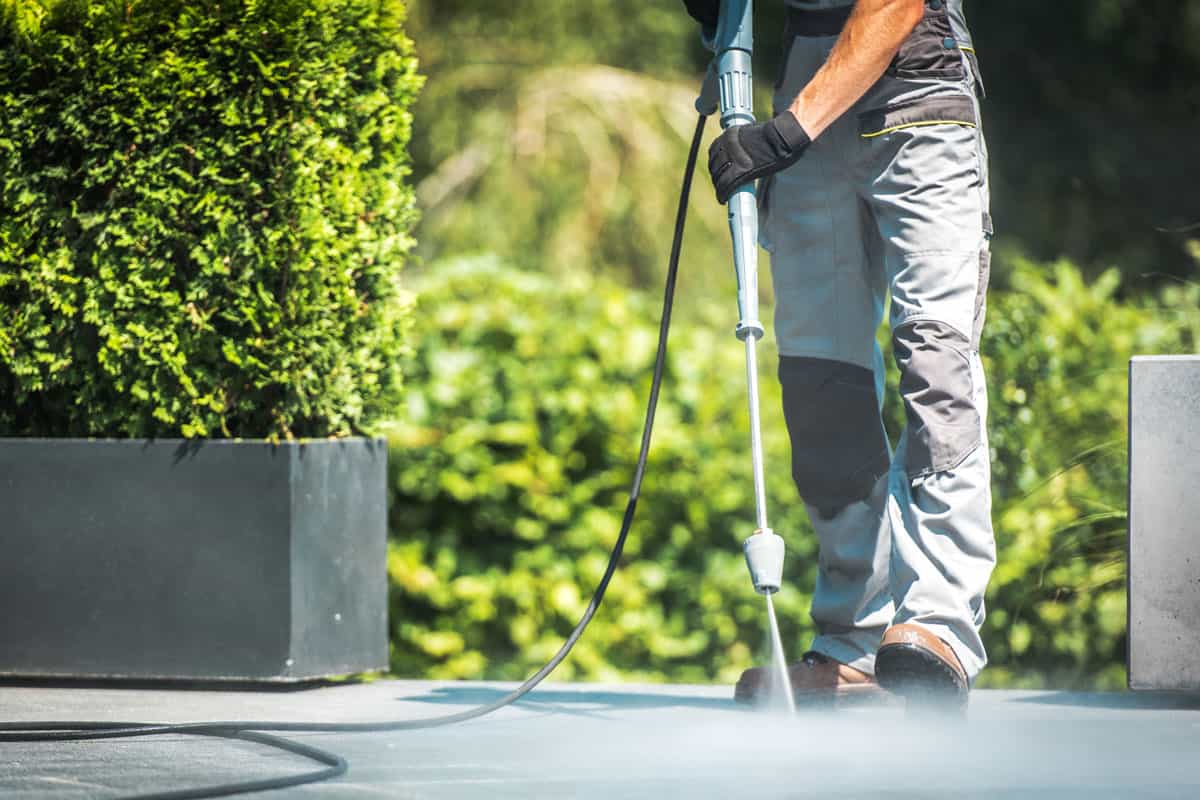
It is important to become familiar with the different nozzles before using your Craftsman pressure washer.
If you found this article interesting, why not check the two articles below too:
7 Best Plant-Safe Exterior House Cleaners
I Can’t Get My Garden Hose Off The Pressure Washer—What To Do?




